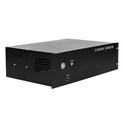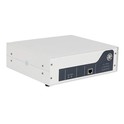As a supplier of universal ultrasonic transducers, I often encounter inquiries from customers about the far - field distance of these transducers. Understanding the far - field distance is crucial for many applications that rely on ultrasonic technology, such as non - destructive testing, medical imaging, and industrial sensing. In this blog post, I will delve into what the far - field distance of a universal ultrasonic transducer is, why it matters, and how it can impact your projects.
What is the Far - Field Distance?
The far - field distance, also known as the Fraunhofer distance, is a critical parameter in ultrasonic wave propagation. When an ultrasonic transducer emits a sound wave, the wave pattern can be divided into two main regions: the near - field and the far - field.
In the near - field region, which is close to the transducer surface, the ultrasonic wave has a complex and non - uniform distribution. The amplitude and phase of the wave vary significantly in this region, and the wavefronts are curved. This complexity makes it difficult to use the near - field for accurate measurements and sensing in many applications.
On the other hand, the far - field region starts at a certain distance from the transducer. In the far - field, the ultrasonic wavefronts become approximately planar, and the wave amplitude decreases as the inverse of the distance from the transducer. The sound energy spreads out in a more predictable and uniform manner, following the laws of geometric acoustics.
Mathematically, the far - field distance (d_f) of a circular ultrasonic transducer can be calculated using the following formula:
[d_f=\frac{D^2}{\lambda}]
where (D) is the diameter of the transducer and (\lambda) is the wavelength of the ultrasonic wave in the medium. For rectangular transducers, the formula is more complex, but the general concept remains the same. The far - field distance is proportional to the square of the transducer size and inversely proportional to the wavelength.
Why Does the Far - Field Distance Matter?
The far - field distance is of great importance in various ultrasonic applications. Here are some key reasons:
1. Accurate Measurement
In applications such as non - destructive testing, accurate measurement of flaws or defects in materials is essential. In the far - field, the ultrasonic wave has a more predictable behavior, which allows for more accurate measurements of the size, location, and orientation of defects. For example, when detecting cracks in metal structures, using the far - field can provide more reliable data about the crack's dimensions, helping engineers make informed decisions about the integrity of the structure.
2. Uniformity of Sensing
In industrial sensing applications, such as level measurement in tanks or flow measurement in pipes, a uniform sensing field is required. The far - field provides a more uniform distribution of ultrasonic energy, which ensures that the sensor can detect the target object or substance with consistent sensitivity across the sensing area. This uniformity leads to more accurate and reliable measurements.

3. Medical Imaging
In medical ultrasound imaging, the far - field is crucial for obtaining clear and accurate images of internal organs. The planar wavefronts in the far - field allow for better focusing and resolution, enabling doctors to visualize the structure and function of organs more precisely. This is especially important in diagnosing diseases and abnormalities in the body.
Factors Affecting the Far - Field Distance
Several factors can affect the far - field distance of a universal ultrasonic transducer:
1. Transducer Size
As mentioned in the formula for the far - field distance, the size of the transducer plays a significant role. Larger transducers have a longer far - field distance. This means that if you need to detect objects at a greater distance, you may consider using a larger transducer. However, larger transducers also have some limitations, such as higher power consumption and larger physical size.
2. Frequency
The frequency of the ultrasonic wave is inversely related to the wavelength ((\lambda=\frac{v}{f}), where (v) is the speed of sound in the medium and (f) is the frequency). Higher - frequency ultrasonic waves have shorter wavelengths, which result in a shorter far - field distance. Lower - frequency waves, on the other hand, have longer wavelengths and a longer far - field distance. When choosing a transducer, you need to balance the frequency based on your application requirements. For example, if you need high - resolution imaging, a higher - frequency transducer may be preferred, but if you need to detect objects at a greater distance, a lower - frequency transducer may be more suitable.
3. Medium Properties
The properties of the medium in which the ultrasonic wave propagates also affect the far - field distance. The speed of sound (v) varies depending on the medium. For example, the speed of sound in water is about 1480 m/s, while in air it is about 343 m/s at room temperature. Since (\lambda=\frac{v}{f}), the wavelength and thus the far - field distance will change with the medium. Additionally, the attenuation of the ultrasonic wave in the medium can also impact the effective far - field distance. Media with high attenuation, such as some biological tissues, may reduce the usable far - field distance.
Impact on Universal Ultrasonic Transducer Selection
When selecting a universal ultrasonic transducer for your application, the far - field distance is an important consideration. Here are some guidelines:
1. Application Requirements
First, determine the requirements of your application. If you need to detect objects at a long distance, choose a transducer with a larger size and a lower frequency to achieve a longer far - field distance. For example, in long - range level sensing in large tanks, a large - diameter, low - frequency transducer would be a good choice. On the other hand, if you need high - resolution imaging or short - range sensing, a smaller, high - frequency transducer may be more appropriate.
2. Compatibility with the Medium
Consider the medium in which the transducer will operate. Make sure the transducer is compatible with the medium's properties, such as its speed of sound and attenuation. For example, if you are using the transducer in a liquid medium, ensure that the transducer is designed to work effectively in liquids.
3. Trade - offs
There are often trade - offs when selecting a transducer based on the far - field distance. Larger transducers may provide a longer far - field distance, but they may also be more expensive, consume more power, and have a larger physical footprint. Higher - frequency transducers can offer better resolution but may have a shorter far - field distance. You need to weigh these factors based on your specific application needs and budget.
As a supplier of Ultrasonic Transducer, we offer a wide range of universal ultrasonic transducers with different sizes, frequencies, and designs to meet your diverse needs. Our team of experts can help you select the most suitable transducer for your application, taking into account the far - field distance and other important parameters.
If you are interested in learning more about our universal ultrasonic transducers or have any questions regarding the far - field distance and its impact on your projects, please feel free to contact us. We are always ready to assist you in finding the best solutions for your ultrasonic applications. Whether you are in the field of non - destructive testing, medical imaging, or industrial sensing, we can provide you with high - quality transducers and professional technical support.
References
- Breazeale, M. A., & Breazeale, D. F. (1989). Ultrasonic methods in materials characterization. Springer Science & Business Media.
- O'Donnell, M., & Miller, J. G. (1981). A review of ultrasonic transducers for medical applications. Proceedings of the IEEE, 69(4), 482 - 501.
- Krautkramer, J., & Krautkramer, H. (1990). Ultrasonic testing of materials. Springer - Verlag.





